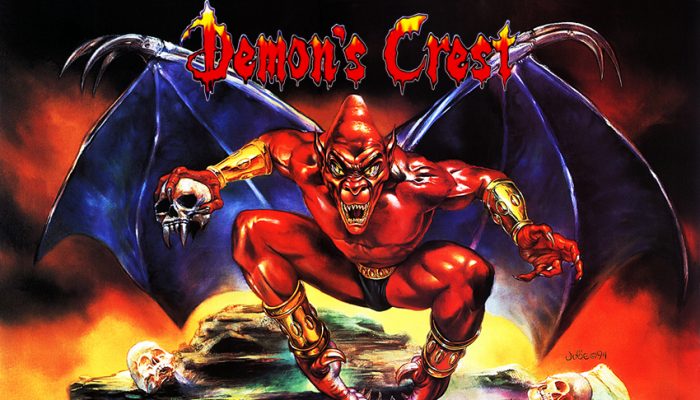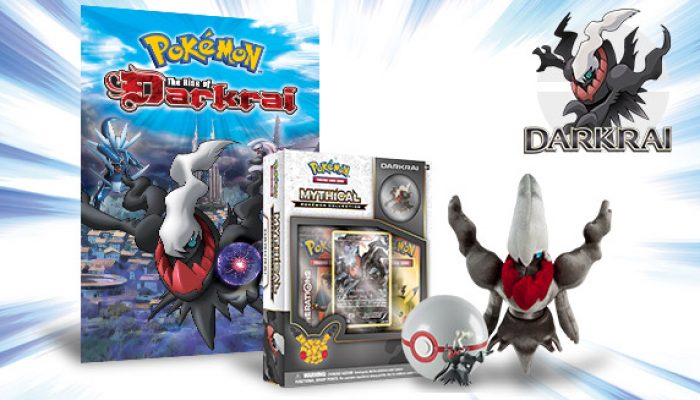 These are 2-vs-2 advices for tournaments. They don’t really work in 1-vs-1 circumstances.
These are 2-vs-2 advices for tournaments. They don’t really work in 1-vs-1 circumstances.
☆ NintendObs Weekly – Monday, May 11, 2015 – Sunday, May 17, 2015.

A Look Ahead to the Spring Video Game Regional Championships
Examine trends in Pokémon and outline strategies expected in the next major Pokémon video game competitions.
Version française ici : Nos prévisions pour les Championnats Nationaux de Jeu Vidéo. 😉
May 11, 2015
With the 2015 Spring Regional Championships fast approaching, Trainers are putting the finishing touches on their teams. The Winter Regional Championships set the stage for players as the first major events played with new Pokémon and moves from Pokémon Omega Ruby and Pokémon Alpha Sapphire. This tournament also marked a return to players having the entire National Pokédex at their disposal. Now, after honing their skills in Premier Challenges and Online Competitions, Trainers are preparing new strategies that they hope will earn them a place on the podium.
Many of the most popular Pokémon from the winter events, including Pokémon that were most popular in the International Challenge February, are likely to continue to be found on many teams. In general we’re seeing a trend toward greater defensive play. But we also expect Trainers to start opening up their teams to some new Pokémon as they try to gain an advantage on opponents sticking to more established Pokémon.
The most successful Trainers will be the ones who can handle the Pokémon that were common in the winter events and the Pokémon that will rise to stardom in the spring. The following Pokémon weren’t popular picks last winter, but each of them have been gaining popularity and could be major factors in the upcoming Spring Regional Championships!
Clefairy
Historically, many Trainers have tended to dismiss Pokémon that haven’t fully evolved, but they’re beginning to realize this is a mistake when considering Clefairy. When Clefairy is holding an Eviolite, which boosts the Defense and Special Defense of Pokémon that are not fully evolved, it can become even tougher to take down in a single hit than its otherwise sturdier evolution, Clefable. As you’ll see, Clefairy has emerged as an amazing supporting Pokémon. The biggest downside to Clefairy is that Clefairy isn’t much of a secret anymore—teams have been winning Premier Challenges with it all over the country.
Much like Se Jun Park’s Pachirisu in the 2014 World Championships, Clefairy has begun to take on the role of unlikely team protector. Clefairy changed from a Normal-type Pokémon to a Fairy-type Pokémon in Pokémon X andPokémon Y, transforming how people could use it in battle. Its Follow Me move is a clear beneficiary of this change—it allows Clefairy to divert Fighting-type attacks away from the likes of Mega Kangaskhan, or Dragon-type attacks away from Mega Salamence, both of which Clefairy is now resistant to thanks to its new type.
One of the best reasons to use Clefairy instead of other Pokémon that can learn similar moves is Clefairy’s amazing Friend Guard Hidden Ability, which reduces the damage of attacks to Clefairy’s allies just by having Clefairy on the field. Trainers commonly try to get around Follow Me by using attacks that hit both opponents, such as Earthquake and Rock Slide. Friend Guard allows Clefairy to continue to help keep its teammates on the field and dealing damage when those kinds of ranged attacks are used. Clefairy can even use Protect to defend itself or attack while still helping its teammate with Friend Guard.
Clefairy’s clearest weakness is its offensive value. But Clefairy can still contribute offensively with Helping Hand, a move that causes Clefairy’s partner to deal much more damage than it normally would for one turn. After Clefairy uses Follow Me to give cover for its ally’s attacks, it can switch to using Helping Hand to allow its partner to finish off weakened enemies—or use it quickly to get a surprise one-hit knock out with a big burst in damage. When push comes to shove, Clefairy can use Moonblast to do respectable damage to the many Pokémon weak to Fairy-type attacks.
Seeing Clefairy find its way onto a Video Game National Champion’s team may seem unbelievable, but it may be the best teammate available to offensive teams right now. Trainers who don’t take Clefairy seriously can quickly find themselves in a losing battle!
Zapdos
Once thought to be a weaker choice for an Electric-type Pokémon when compared to Thundurus, Trainers have been giving a second look to Zapdos at recent tournaments. Zapdos brings a combination of defensive reliability, strong offense, and access to a key support move that makes it a unique and useful addition to many teams.
Zapdos often gets the nod as the more offensive Electric- and Flying-type Pokémon because it can learn Tailwind, a move that Thundurus cannot. Tailwind doubles the Speed of all the Pokémon on the user’s team for four turns, making it an excellent choice to support powerful offensive Pokémon such as Mega Kangaskhan and Mega Charizard Y. The goal with Tailwind is to allow the team’s powerful attackers to quickly decide a battle by the time the effect of Tailwind wears off. Accelerating stronger but slower Mega-Evolved Pokémon with Tailwind has been a popular strategy in the Video Game Championships for a while, with Talonflame using it last year and Suicune replacing it on many teams this winter. Zapdos is now becoming popular for Trainers looking for Tailwind because it is able to deal super-effective damage to both of these Pokémon.
Zapdos is typically loaded with attacks of varying types to ensure super-effectiveness against a number of different opponents. Heat Wave, Thunderbolt, and even an Ice-type Hidden Power are among the moves it most frequently knows. After all that attacking, most Pokémon are ready to drop, but Zapdos shines late in battles. Once Zapdos has been weakened, it can use one more move it has that Thundurus can’t learn, Roost, to regain half of its health. Opponents trying to use Protect to survive the final turn of Tailwind could find themselves in for a surprise as Zapdos heals up and gets ready for a second assault.
Zapdos’ defensive prowess is further strengthened by the immunity to Paralysis that Electric-type Pokémon gained in Pokémon X and Pokémon Y, blocking a common counter to Tailwind. Players will have to use caution when facing Terrakion in battle, as it continues to wreak havoc on not only Zapdos, but on many of the Pokémon it is frequently partnered with. Still, thanks to a strong set of moves to accompany Tailwind, look for many players to tap Zapdos for Tailwind support at the Spring Regionals.
Venusaur
Almost always chosen to battle as a Mega-Evolved Pokémon, Mega Venusaur is one of the few Mega-evolved Pokémon to appear on multiple winning teams during the Winter Regionals. In spite of that success, it was otherwise used relatively infrequently for the remainder of the winter. Trainers have tried their luck with Venusaur, often pairing it with a Fire-type Pokémon such as Heatran, or a Water-type Pokémon such as Wash Rotom or Suicune, and a couple final Pokémon that add some flair to their teams. Trainers will definitely need a solid plan against Mega Venusaur this time in the Spring Regionals!
The strength of Mega Venusaur is its stout defense, which is further enhanced by its Thick Fat Ability, reducing damage from Ice-type and Fire-type attacks. Additionally, Venusaur can stay in battle by restoring its health, as it often knows HP-draining moves such as Giga Drain and Leech Seed. A Pokémon as bulky as Mega Venusaur starting out with Leech Seed and then alternating between Protect and Giga Drain can be incredibly difficult to take down. It isn’t the kind of Mega-Evolved Pokémon that will knock out Pokémon in a single blow, but it is one of the best Pokémon available at remaining on the field after taking multiple hits.
Sylveon has become one of the most popular Pokémon in the Video Game Championships, which in turn has made Venusaur even more valuable on many teams. Venusaur’s Poison type gives it a resistance to Sylveon’s Hyper Voice attack and, at least partially as a counter to Sylveon, many Trainers teach Venusaur Sludge Bomb, letting it do super-effective damage to the Fairy-type Pokémon. Sludge Bomb is effective against other Pokémon as well, as it has a high chance of poisoning its target—another way that Venusaur’s stoutness helps it slowly knock out foes while it heals with Giga Drain and Leech Seed.
Mega Venusaur is a strong example of the trend toward more defensive Pokémon. It’s one of the few Mega-Evolved Pokémon that isn’t inconvenienced by Intimidate (Sludge Bomb and Giga Drain are both Special Attacks); it brings an immunity to Spore and other powder moves such as Rage Powder and Sleep Powder; and it can easily survive almost any attack that isn’t super-effective against it. Expect Venusaur to find its way on to many more teams this spring than it did last winter.
Scrafty
Almost completely unseen on teams in the final rounds of the Winter Regionals, Scrafty has been increasingly used on teams over the past few months. Scrafty’s value is in its versatility—its Intimidate Ability is respected, it has high Defense, and it has moves that can support a wide variety of teams. Like Venusaur, Scrafty isn’t a Pokémon that will score many one-hit knock outs, but it will stay on the field long enough to help its teammates outlast the opposition.
Most of the Scrafty we’ve seen know Fake Out, a move that goes first and is certain to make its target flinch, but only works on the first turn that Scrafty enters play. Fake Out is especially helpful on teams planning a Trick Room strategy—it can provide first round cover while its partner sets up Trick Room. Scrafty is also fairly slow, so it will benefit from Trick Room when it starts using its other attacks. Many other Pokémon can learn Fake Out, too, such as Liepard and Meowstic, but fewer have the defensive bulk of Scrafty.
One nice little addition to Scrafty’s repertoire is Knock Off, a move it regained the ability to use with Pokémon Omega Ruby and Alpha Sapphire. Knock Off is a Dark-type attack that does more damage if its target is holding an item (as long as the item isn’t a Mega Stone) and Scrafty knocks it off. Knocking off an item while dealing some damage is an important way for the defensive Scrafty to give its team an advantage, since neither Knock Off nor its other popular move, Drain Punch, do a ton of damage.
Like Clefairy, Scrafty isn’t a Pokémon that is going to win battles by knocking out most of the enemy team on its own, but Scrafty is a strong team player. Many Trainers will probably turn to Scrafty to help keep their teams healthy over long battles.
Politoed
The return of the National Pokédex virtually guarantees the return of Politoed and the weather-based teams that come with it. Politoed is the Pokémon of choice for Rain teams thanks to its awesome Drizzle Ability, saving the need to use Rain Dance to start rain. Trainers typically take advantage of the rain it causes by loading up Politoed with great attacking moves such as Scald and Hydro Pump, as well as pairing Politoed with Pokémon that have the Swift Swim Ability, such as Ludicolo and Kingdra, increasing their Speed.
In previous appearances, Trainers have focused Politoed on being an attacker. Now that it can learn Helping Hand again, Politoed has swung into more of a defense and support role. Helping Hand provides enough power to its partner Pokémon that the likes of Metagross, Hydreigon, and Mawile can become juggernauts in battle. Drizzle also suppresses Fire-type attacks, providing a little defense for Metagross, Ferrothorn, and other Steel-type Pokémon that would otherwise get knocked out. Politoed provides additional support by thwarting Ground-type Pokémon, a natural threat to Steel-type Pokémon.
Politoed and Kingdra can combine to make a terrific duo using a tactic involving two non-attacking moves. It works like this: when a Pokémon has had a move disabled, and then is hit by Encore, that Pokémon uses Struggle, the weak attack that ordinarily happens when none of a Pokémon’s moves have any PP left. Worse yet, the Pokémon that uses Struggle is also hit by recoil damage equal to a quarter of the Pokémon’s max HP. It’s a maddening combination, and one that Politoed and Kingdra excel at. After Kingdra uses Disable, Politoed follows up with Encore, cutting the damage its target can inflict down to virtually nothing.
Politoed is currently virtually unchallenged by other weather-based teams, such as Sandstorm and Hail teams. Mega Charizard Y is the only other real weather threat right now, with its Drought Ability summoning harsh sunlight. It’ll be interesting to see how long that lasts if Politoed becomes more popular. But for now, it looks like Politoed could have a good run in the Spring Regional Championships.
These are some Pokémon that have been gaining popularity recently, but no one will know exactly what Pokémon players will select until the tournament begins. Trainers looking to come out on top will need to anticipate which Pokémon their opponents will bring and be ready for anything! But, having an idea of some of what you can expect to see should help you plan for your next battles.
Remember that we will be streaming matches from the Spring Regional Championships in Madison, Wisconsin. If you can’t make it to a Spring Regionals tournament, you can look forward to watching some of these Pokémon in action!
Good luck at the Spring Regional Championships!
— Pokémon News
Source: Pokémon.
At NintendObserver, the comments are on Discord.
Click on Community to learn more. 🙂
…
And if you’ve already got yours, click on Pokémon Omega Ruby and Alpha Sapphire for everything you need to know about the games. 😀










